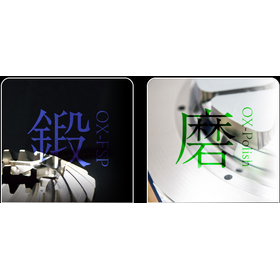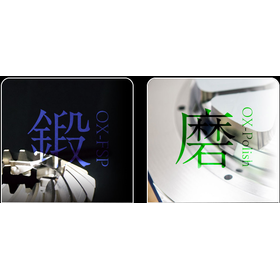Precision shot peening: Improving the lifespan and moldability of die-casting molds.
Introducing the effectiveness of surface modification technology for die-casting molds and examples of its application. *Case study collection available as a gift.
Our unique technology, "OX-FSP treatment," has various effects, among which we would like to introduce five benefits related to the improvement of the lifespan and moldability of die-casting molds. (1) Significant extension of mold lifespan through the application of compressive residual stress, contributing to heat crack prevention due to a remarkable improvement in half-value width. (2) Reduction of galling and extension of mold lifespan, with improved wettability leading to more uniform spraying and retention of release agents. (3) Improved flowability and release properties due to a special plateau structure, resulting in reduced defect occurrence due to enhanced moldability, decreased porosity due to improved release and fluidity, and enabling thin-walled molding through enhanced gas venting and flow characteristics. (4) Increased longevity and improved moldability in magnesium casting. (5) Significant improvement in resistance to dissolution through a composite treatment with the special coating "OX-COAT." *For more details, please download the PDF or feel free to contact us.
basic information
【Other Effects】 Refines the metal structure and significantly improves heat check resistance. *For more details, please download the PDF or feel free to contact us.* 【Features of Oxy】 □ Capable of handling small lots (from 1 piece) to mass production □ Permanent test machines for prototyping □ Equipped with various inspection devices *We are available to provide explanations anywhere across the country.*
Price information
We will submit the estimate as soon as possible.
Delivery Time
Applications/Examples of results
For more details, please download the PDF or feel free to contact us.
Detailed information
-
The surface structure of high-tensile steel treated with "OX-FSP" shows a nanocrystalline structure formed in the outermost layer, which has a hardness more than 2.5 times that of the normal structure.
-
Test Results Test Method (1) Pressed and heated to 660°C HP in the atmosphere (2) Water cooling (approximately 30°C) (3) Observation of heat crack count through cross-sectional tissue observation Number of cycles: 2000 cycles Sample material: SKD61 / Quenched and tempered
catalog(2)
Download All CatalogsRecommended products
Distributors
OXISO Co., Ltd. has been honing its surface modification technology for engine parts and molds in Iwata City, Shizuoka Prefecture, where manufacturing technology has been accumulated for many years. Utilizing our accumulated technology and know-how, we understand the challenges faced by customers struggling with issues such as insufficient strength of parts and worsening defect rates on mass production lines. Like a doctor providing precise diagnoses and careful treatment, we identify the problems our customers face, investigate the causes, and offer optimal processing solutions.


























































